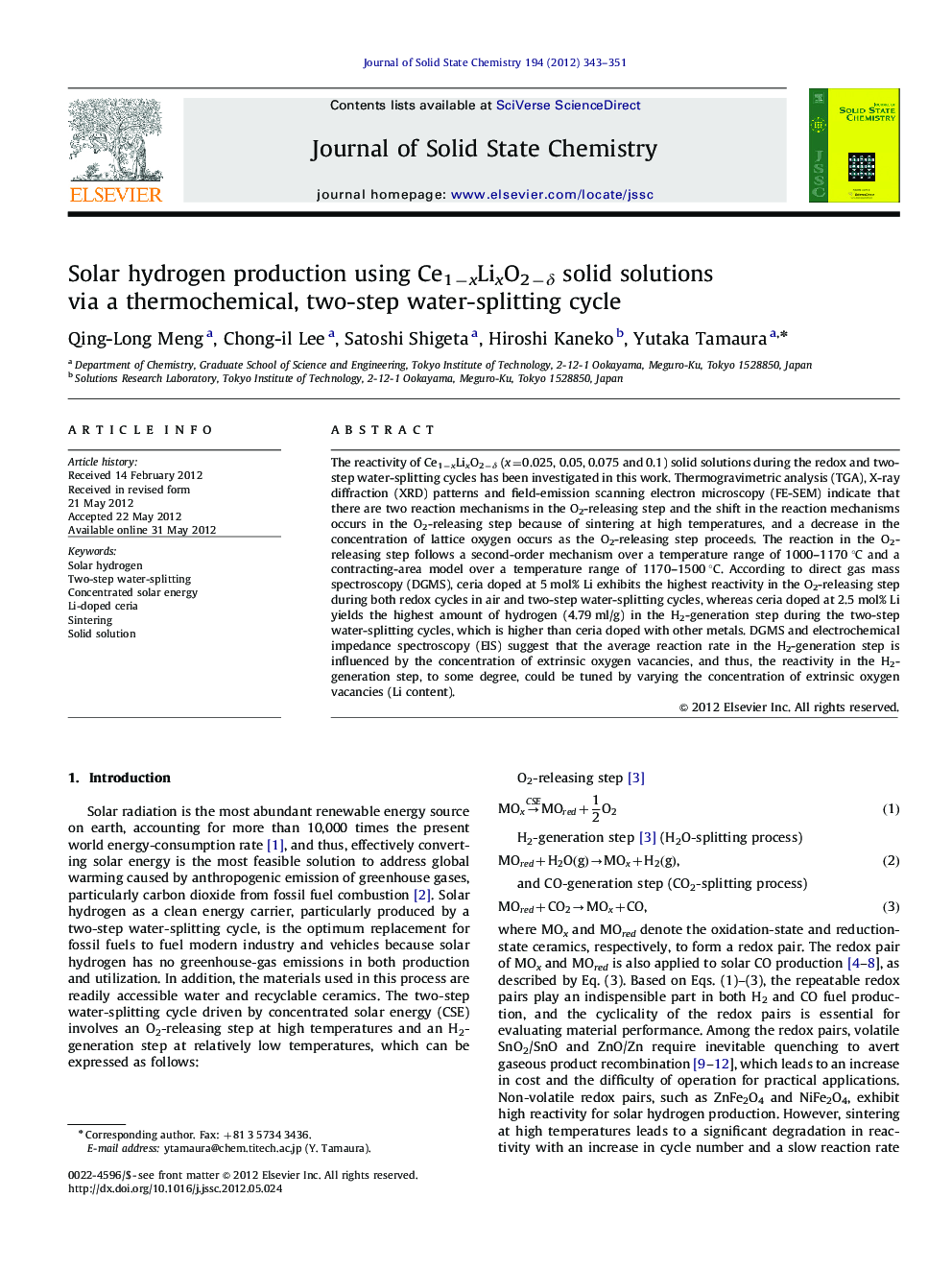| Article ID | Journal | Published Year | Pages | File Type |
|---|---|---|---|---|
| 1330288 | Journal of Solid State Chemistry | 2012 | 9 Pages |
The reactivity of Ce1−xLixO2−δ (x=0.025, 0.05, 0.075 and 0.1) solid solutions during the redox and two-step water-splitting cycles has been investigated in this work. Thermogravimetric analysis (TGA), X-ray diffraction (XRD) patterns and field-emission scanning electron microscopy (FE-SEM) indicate that there are two reaction mechanisms in the O2-releasing step and the shift in the reaction mechanisms occurs in the O2-releasing step because of sintering at high temperatures, and a decrease in the concentration of lattice oxygen occurs as the O2-releasing step proceeds. The reaction in the O2-releasing step follows a second-order mechanism over a temperature range of 1000–1170 °C and a contracting-area model over a temperature range of 1170–1500 °C. According to direct gas mass spectroscopy (DGMS), ceria doped at 5 mol% Li exhibits the highest reactivity in the O2-releasing step during both redox cycles in air and two-step water-splitting cycles, whereas ceria doped at 2.5 mol% Li yields the highest amount of hydrogen (4.79 ml/g) in the H2-generation step during the two-step water-splitting cycles, which is higher than ceria doped with other metals. DGMS and electrochemical impedance spectroscopy (EIS) suggest that the average reaction rate in the H2-generation step is influenced by the concentration of extrinsic oxygen vacancies, and thus, the reactivity in the H2-generation step, to some degree, could be tuned by varying the concentration of extrinsic oxygen vacancies (Li content).
Graphical abstractAverage reduction fraction of Ce1−xLixO2−δ (x=0.025, 0.05, 0.075 and 0.10) solid solutions versus Li content in the O2-releasing step during the redox cycles in air and the two-step water-splitting cycles.Figure optionsDownload full-size imageDownload as PowerPoint slideHighlights► We have investigated Li-doped ceria for hydrogen production using two-step water-splitting cycles. ► The sintering effect on the reaction mechanisms was first clarified. ► The shift of reaction mechanisms occurs during the O2-releasing step. ► The reaction-mechanism shift occurs because of sintering at high temperatures. ► Doping at 2.5 mol% Li results in the highest H2 yield and cyclability for hydrogen production.
